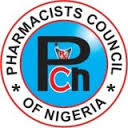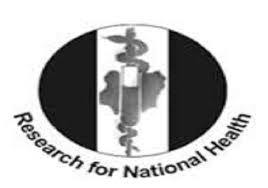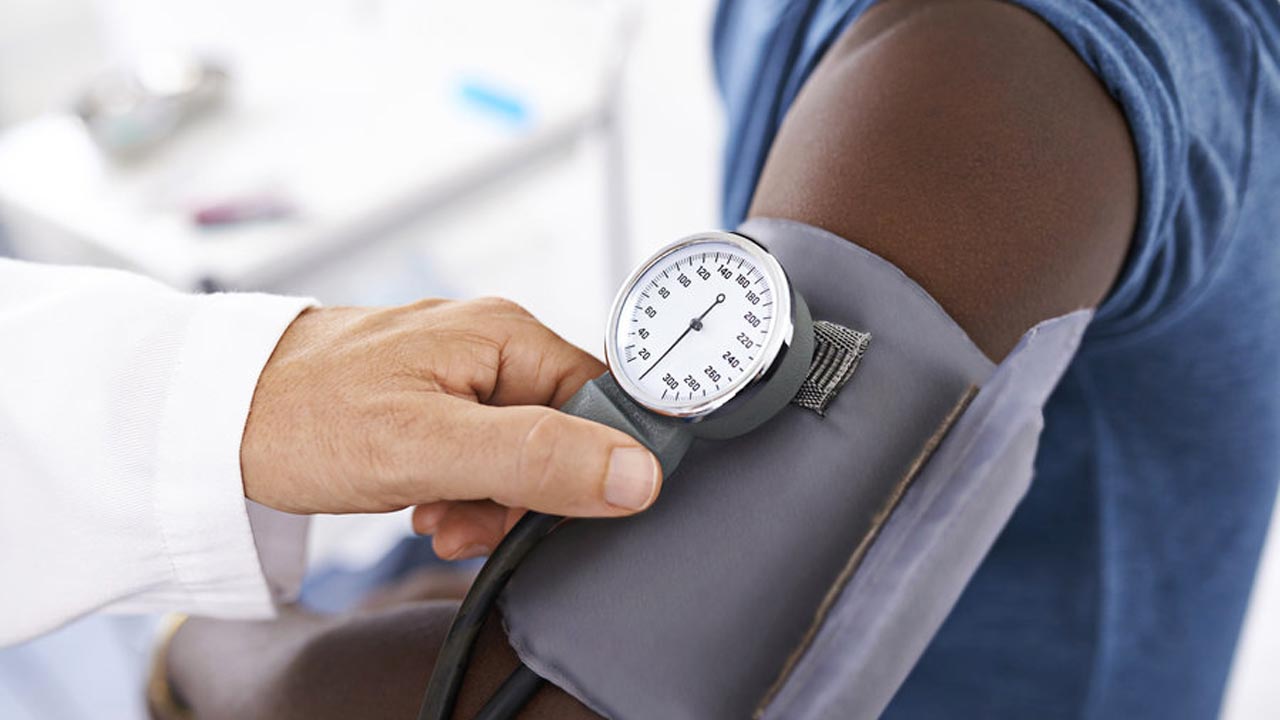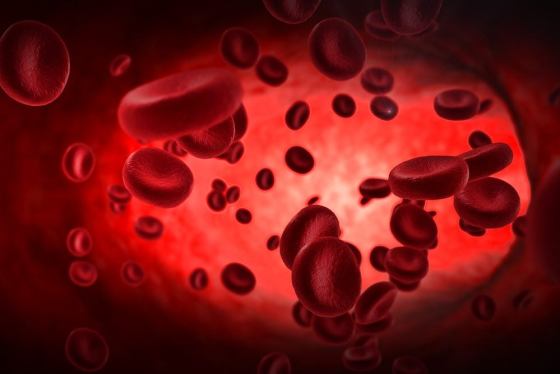Amid a surge in new pediatric HIV cases, 300 deaths weekly, and an astounding 15,000 deaths yearly involving children, Nigeria’s HIV response is simply at a crossroads. However, high registration and delivery fees at antenatal centres, strange user fees charged, and other factors discourage infected pregnant women from attending antenatal care sessions and giving birth at health facilities. As the 2024 World AIDS Day is celebrated, NKECHI ONYEDIKA-UGOEZE reports that while pediatric HIV treatment in Nigeria is a mere 35 per cent as against the global set standard of 90 per cent, ridding the country of the pandemic by 2030 may remain a pipe dream, especially with newborns forming new generations of carriers.
Not many were stunned when the Federal Government recently disclosed that an estimated 140,000 Nigerian children are currently infected by HIV. The revelation was made even more sordid with the explanation that despite efforts being made to control HIV infection among children, paediatric treatment remained at a mere 35 per cent as against the global standard of 95 per cent
Disclosing at a ceremony marking the launch of Preventing Mother-To-Child Transmission (PMTCT) of HIV and Paediatric AIDS Acceleration Plan Committee, in Abuja, the former Minister of State for Health and Social Welfare, Dr Tunji Alausa, explained that HIV infection remained a major threat to the survival of children.
His words: “As you are aware, Nigeria contributes 25 per cent of the global burden of HIV transmission between mothers and their children. Despite testing approximately four million pregnant women in 2023, our Prevention of Mother-to-Child Transmission (PMTCT) and paediatric HIV coverage remains at about 35 per cent, falling significantly short of the 95 per cent target.
Putting it in context, 15,000 deaths recorded among children yearly, 300 of which occur weekly and occasioned by the 22,000 new mother-to-child transmission of HIV summarises the fact that Nigeria’s HIV response is at a crossroads.
As if this scenario is not grim enough, the Joint United Nations Programme on HIV/AIDS (UNAIDS) maintains that Nigeria contributes 46 per cent of new infections among children in the West and Central African region and 18 per cent of the global figure
Despite this burden, only about 30 per cent of children who need antiretroviral therapy (ART) are receiving it compared to 90 per cent of adults living with HIV, who are on the life-saving treatment.
Ending HIV infections among children is very critical for having an HIV-free generation, and the risk of transmitting HIV from mother to infant can be reduced if the mother is on ART and remains virally suppressed.
Regrettably, it is estimated that only 33 per cent of pregnant women who are living with HIV are receiving antiretroviral treatment to prevent the transmission of HIV to their infants. This low coverage extends to women living with HIV, who are breastfeeding.
Painting an even clearer picture of ugly situation that the country is contending with in a chat with The Guardian, the National Coordinator of the Association of Women Living with HIV/AIDS (ASHWAN), Esther Hindi, accused the Federal Government of scant commitment towards ending mother-to-child transmission of HIV, adding that the Global Fund and PEPFAR are the ones leading the HIV response in the country, while the Federal Government is largely relying on donor funding for its HIV response
She said: “There is no sign of commitment from the government on the issue of mother-to-child transmission of HIV; they have been talking about general population, key population, treatment, and care. We have even diverted from the prevention itself. It is now that we are realising that other components have been neglected, especially pediatric care. The implication is that children who are born with HIV constitute an entirely new generation of people who will be living with HIV. If you look at the stages of their lives, from birth to adolescence, up to adulthood, it means that we will have a high number of people living with HIV and AIDS in the future if it is not controlled at this stage.”
Shedding light on some of the factors that may hinder the fight against mother-to-child transmission, she said: “Talking about delivery kits, each woman has to pay N12,000 in some cases; register for antenatal care with N5,000 making it N17,000. After all these, women still pay for tests. In this present economy, how many women, especially in the rural areas can afford to pay between N17,000 and N20,000 in some cases? This is really on the high side.”
Hindi further alleged that some primary healthcare facilities in states have labour rooms that are without test kits as many states have run out of stock of HIV test kits at the moment.
She said: “How can there be labour rooms and there are no testing kits? How can there be antenatal clinics and there are no testing kits for women when that is the only place that HIV-positive mothers can be detected? And as I am talking to you, test kits are out of stock in most of these facilities. So, that is where we even need to start from. If you cannot capture HIV-positive women at the ANC, where else can you capture them? But right now the Coordinating Minister of Health is intervening. Also, partners like the Global Fund and others are making efforts to secure more test kits for the country.”
According to Hindi, apart from labour rooms in many states being bereft of test kits, there are differences in most services that are being provided in ANCs.
“Across many states, some services are still being paid for even if the government claims that they are free. In most cases, the only free thing is the drug, but when you want to do a test, some hospitals charge for those tests. So, we are still advocating for a change because some of these tests are HIV-specific, so, why should they charge the so-called user fees since donors and partners are providing the materials that are used in conducting these tests?
Hindi added that apart from these charges, the only ANC packs that are free for pregnant women who are living with HIV are the ones that partners, donors, or NGOs give as Mama Packs, for women, or Baby Shower Packs. “But for the ones that the governments are providing, for now, there is none that I know that is free.”
A member of the Network of People Living With HIV/AIDS (NEPWAN), Gloria Asuquo, told The Guardian that the possibility of an increase of HIV at the facility setting is high due to healthcare providers’ attitude, adding that due to fear of stigmatisation and discrimination, some pregnant women who are HIV positive have refuse to reveal their status while some of them believe in going through traditional birth attendants instead of using health facilities during delivery.
Asuquo, who also commented on the introduction of payments like consultation fees, which were not previously there, stressed that the high cost of living and increased transportation costs worsen the situation of women living with HIV/AIDS
She said: “There is a case right now involving a woman, who is due for delivery, but can’t do vaginal delivery because of some challenges, and the doctor is telling her to bring N360,000 for Cesarean Section. This is a woman who is not doing anything and is not on NHIS. Right now, the chances of the baby getting infected are 80 per cent to 90 per cent because it is already a prolonged labour. These are the kinds of things that PLHIV face, especially women in terms of accessing treatment.”
“Another issue is that there is no money anywhere now and when you think of going for your antenatal session, you first of all look at the cost of transportation to the facility. A woman chatted me up just a few days ago that she is pregnant, doesn’t have medication, and does not have transport fare to go to the facility. So, I had to take my medication to her because, upon inquiry, I discovered that she was taking the same medication that I was taking.
After giving her my drug, I went to her facility to inform them that the woman was pregnant and did not have transport fare to come to the facility. The question now is, how about those that are in similar conditions, but can’t reach out to others? These are some of the factors that are ensuring that mother-to-child transmission of HIV thrives.
Asuquo advocated for the inclusion of People Living With HIV and AIDS in the National Health Insurance under the Vulnerable Group Fund because of the many opportunistic infections and other ailments that PLHIV can come down with.
Government’s waning commitment to PMTCT a major concern
OVER the years, the Federal Government appears not to have shown enough commitment to the Prevention of Mother to Child Transmission (PMTCT) component of the HIV response, leading to a lot of pregnant women who are living with HIV allegedly deserting antenatal care facilities due to charges that are beyond their abilities.
This explains why Hindi, the national coordinator of ASHWAN warned of the consequences that await the country if women who are living with HIV, especially those in the rural areas are forced to abandon treatment because they cannot afford antenatal care registration charges and delivery kits.
She also expressed regrets that there is a general decline in donor funding for HIV response hence the need for the government to show some level of commitment and mobilise domestic resources to ensure that the PMTCT component is adequately taken care of.
For observers of the situation, this development is curious given the huge financial support from donors like the Global Fund, and the United States President’s Emergency Plan for AIDS Relief (PEPFAR) towards the HIV response.
December 1 every year is designated as World AIDS Day by the World Health Organisation (WHO) to raise awareness about HIV/AIDS, and to demonstrate international solidarity in the face of the pandemic.
This year’s theme: “Take the Rights Path: Sustain HIV Response, Stop HIV among Children to End AIDS in Nigeria by 2030,” aligns closely with the national goals of inclusivity, solidarity, and sustained progress in the fight against HIV/AIDS.
Meanwhile, Nigeria contributes the largest burden of babies born with HIV in the world and is responsible for about 30 per cent of the world’s gap in achieving the global target of eradicating MTCT transmission of HIV.
Mother-to-child transmission (MTCT) of HIV is one of the most common avenues through which infants are infected with HIV as a carrier mother can infect her baby during pregnancy, childbirth, or breastfeeding.
Interventions to reduce mother-to-child transmission primarily involve antiretroviral (ARV) treatment (ART) for the mother and a short course of ARV drugs for the baby. But despite this proven medical intervention, which prevents a mother from transmitting the virus to her child, many children are still being born with HIV every year in Nigeria.
According to UNAIDS, there were an estimated 1.7 million children aged 0–14 years living with HIV in 2021 globally, and only five per cent of these children had access to treatment in the same year.
While the number of new HIV infections among children has decreased significantly internationally in recent years, declining by 52 per cent from 320,000 in 2010 to 160,000 in 2021, available statistics show that Nigeria is still recording an increase in new infections.
In 2021, Nigeria’s Global Alliance to End AIDS in Children Action Plan was developed to scale up pediatric HIV care and eliminate vertical transmission of HIV between mothers and their children, but three years after, the country is yet to witness significant progress, as service coverage has remained below 35 per cent, falling significantly short of the global target.
Epidemiological estimates remain uninspiring due to prevalent factors
NIGERIA’S epidemiological estimates showed that 140,000 children under 14 were living with HIV as of 2023, with 22,000 new infections and 15,000 AIDS-related deaths in children. This is despite testing approximately four million pregnant women in 2023. Findings show that there is a huge treatment gap in pediatric HIV in the country as only about 30 per cent of children living with the disease are on life-saving treatment.
Some stakeholders lament that non-disclosure of HIV status, non-usage of health facilities during delivery by so many pregnant women, health workers’ attitude, late initiation of ARV treatment/adherence, and HIV-related stigma and discrimination among others contribute significantly to the spike in paediatric HIV cases in the country.
A mentor mother, Queen Kennedy, confirmed to The Guardian that cases of mother-to-child transmission of HIV are on the rise because a lot of pregnant women who are living with HIV do not attend antenatal clinics, some register late while many of them give birth at home through the help of quacks.
Kennedy: “Before now, antenatal care was free for those who already know their status, and this encouraged them to go for antenatal care in subsequent pregnancies, but right now there’s nothing like that. In the facility where I am present, they pay N6,500 for registration, including their drugs, and lab tests, but the fee varies from one facility to the other. This registration fee discourages them because most of these women are not financially empowered.
“Also, they paid for delivery before now, but there is this delivery pack that they are given free. That at least encourages them. But right now, they pay as much as N12,000.00 for it, that is the cost in the facility where I work and this is also a factor that keeps them away. In addition to this, they also pay for other things, and the ones that are going for the Cesarean Section pay normal fees like every other woman. Some government hospitals charge N80,000 for Cesarean Section and they will still ask you to buy blood, drugs etc. At the end of the day, the amount runs into over N100,000. So, these are the things that when they consider, they prefer to go back home and this leads to more HIV children being in circulation, and, of course, high maternal mortality too.”
Kennedy, who expressed concern over poor nutrition among pregnant women living with HIV, which compromises their immunity, urged the Federal Government to reintroduce the child support component of the HIV treatment that has to do with nutrition.
She said: “That component has been phased out, but the government should bring it back. Even if it does not cut across everybody, it should at least be available for pregnant, and breastfeeding mothers and our young children who are on ARV. It will be good if they make the antenatal carefree for them. Alternatively, they should be given some kind of incentive that will encourage them to turn up. We also need to educate traditional birth attendants, and equip them with the necessary knowledge to help prevent mother-to-child transmission of HIV.”
Rising cases of mother-to-child transmission due to systematic problems, entirely preventable
FOR the Country Director of UNAIDS, Dr Leo Zekeng, the rising cases of mother-to-child transmission of HIV in the country is very disheartening and entirely preventable, he told The Guardian.
According to Zekeng, the Nigerian government has successfully mobilised the resources needed to reduce and eliminate paediatric AIDS in Nigeria, but the missing link is the commitment to implementing agreed action plans at the federal, state, and local government levels. He disclosed that only about 33 per cent of pregnant women living with HIV are receiving antiretroviral treatment to prevent transmission of HIV to their infants, adding that this low coverage extends to women living with HIV, who are breastfeeding.
“Consequently, it is estimated that there were 22,000 new HIV infections in children in 2023. There were 48,000 new HIV infections in children in West and Central Africa (WCA), and 120,000 globally. Therefore, Nigeria contributes 46 per cent of the new infections among children in the WCA region and 18 per cent of the global figure,” he added.
Zekeng highlighted that Nigeria’s plan to test all pregnant women for HIV and offer antiretroviral treatment to all those living with HIV will prevent vertical transmission and also protect the women from the devastating effects of HIV on their health and well-being.
The country director further noted that Nigeria has done very well with adults as 90 per cent of those living with HIV are on treatment compared to just 35 of children living with the virus.
Since children acquire HIV from their parents, Nigeria also has a plan to test all the children of adults living with HIV and provide antiretroviral treatment to all children who need it. He said: “The resources to accomplish both tasks are already available in the country, thanks to the generous contributions of the Global Fund to Fight AIDS, Tuberculosis and Malaria, and the US Government through PEPFAR. The Federal Government, state governments, and other partners are also contributing.
On her part, the Director General of NACA, Dr Temitope Ilori, Nigeria is faced with a critical challenge in preventing mother-to-child transmission of HIV, adding that despite creating a comprehensive national strategy, accompanied by financial commitment, mother-to-child transmission, and paediatric HIV coverage remain critically low. She told The Guardian that the increasing cases of mother-to-child transmission are due to systematic problems, ignorance, stigma, and discrimination.
The NACA boss emphasised that we have to eradicate stigma and discrimination so that people can come out and get tested and access health without being discriminated against.
“A woman is afraid that if she tests positive for HIV then the whole world will neglect her, and she would be thrown out of her husband’s house and all that. Consequent to this fear, she does not want to be tested. If she goes for the test and it shows that she is positive, she will run away and never access care. That is why we are using this medium to encourage our people to kind of embrace people with HIV/AIDS. It is a disease like any other, it has a treatment regimen even if you wouldn’t be cured or be completely free from it.
“There are people that take their medications and they are living positively on the drugs. As a family physician, I long to see that no child is born HIV positive in Nigeria, and I know that together we can change this infamous narrative of Nigeria’s contribution to the global burden of PMTCT and paediatric HIV. An AIDS-free generation is possible, and together we can achieve it,” she added.
Ilori continued: “Inflation is obviously and grossly affecting HIV response. For instance, a medication that we bought for $20 last year, if you do the mathematics of what that goes for at this moment, you know how much it would be because the gap is huge. That is why we said that domestic funding is the way to go but for now, we are trying to bridge the gap. We need more domestic resources from the Federal Government; from state governments and even from local governments, especially now that they have autonomy.”
She noted that in 2021, the national and state-level data analysis led to the development of Nigeria’s Global Alliance to End AIDS in Children Action Plan designed to scale up PMTCT efforts, and paediatric HIV by addressing the coverage gaps. But despite this comprehensive strategy and accompanying financial commitment, Nigeria’s PMTCT and pediatric HIV coverage remains critically low, she stated, adding that the acceleration plan committee has been constituted to drive the implementation of this crucial initiative in line with the sector-wide approach, provide oversight to the PMTCT scale-up plan in the states to close the treatment gap for pregnant and breastfeeding women living with HIV.
Ilori added: “The target that by 2030 HIV will no longer be a public health threat is still in focus. As a government, we are working on what we call a sustainability agenda, and it is part of ownership, and domestic resourcing to ensure that we can finance their treatment and that is why we are pushing the agenda of local production of antiretroviral drugs.
“As I speak, all our antiretroviral drugs are produced outside the country, and that is why they are so expensive. So, we are speaking to our domestic pharmaceutical companies to engage in local production of antiretroviral drugs, and test kits so that at least all these will reduce the financial burden on us as a country. So, we are doing our domestic resourcing in terms of increasing budgetary allocation.”
On what needs to be done to address the burden of pediatric HIV in the country, Asquo suggested: “Firstly, I like the way that the government is trying to bring the private sector in to also support the HIV response in Nigeria and to see how people living with HIV/AIDS could be registered under the NHIS platform. Producing our local ART drugs, which is where they are going now, is also key. If the government can achieve this, it would go a long way in addressing the problem.
SOURCE: GUARDIAN NEWSPAPER





